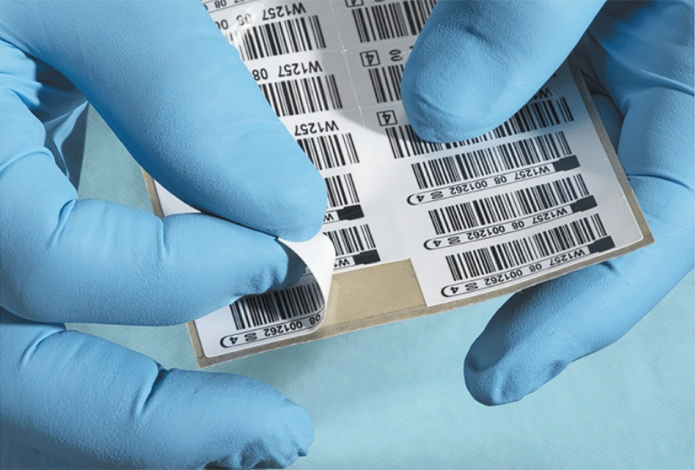As the medical industry continues to grow, so does the need for precise labeling on medical equipment. Proper labeling not only ensures the safety of patients, but also the accuracy of medical procedures. However, with the vast array of medical equipment available, mastering the art of labeling can be a daunting task.
Here, we will explore the importance of precision in print when it comes to medical equipment labels. We will discuss the challenges that come with labeling medical equipment, and provide tips on how to overcome these challenges. We will also delve into the various labeling options available, such as durable and tamper-evident labels, and explain the benefits of each.
Additionally, we will cover the regulations and guidelines put in place by organizations like the FDA and ISO, and how to ensure that your labels comply with these standards. By the end of this post, you will have a better understanding of the crucial role that precision in print plays in ensuring the safety and accuracy of medical equipment labeling.
Importance of label accuracy
In the field of medical device labels equipment, ensuring precision in labeling is of utmost importance. The accuracy of labels can have a significant impact on patient safety, regulatory compliance, and overall operational efficiency. Labels that are inaccurate can result in misidentification of equipment, leading to incorrect usage or maintenance.
This can further result in serious patient harm or even death. Additionally, non-compliance with labeling requirements can lead to legal and financial penalties.
To avoid such scenarios, it is crucial to ensure that labels accurately represent the information about the equipment, including model number, serial number, manufacturer information, and any necessary safety warnings. In short, label accuracy is an essential component of maintaining high standards in medical equipment safety and compliance.
Regulatory requirements for labeling
The regulatory requirements for labeling medical equipment are crucial to ensure the safety and efficacy of the product. Inaccurate or incomplete labeling can lead to serious consequences, including injury or death. The FDA has established guidelines for medical device labeling that manufacturers must adhere to.
These guidelines specify the required information that must be included on the label, such as the device name, intended use, and any potential risks associated with the device.
Additionally, the FDA requires that the labeling be clear and easy to read, with legible font and appropriate language for the intended user. It is essential for manufacturers to carefully review and comply with these regulatory requirements to produce accurate and effective labeling for medical equipment.
Materials for durable labels
When it comes to labeling medical equipment, precision is key. Labels must be clear, concise, and durable to ensure that the information they convey remains legible and accurate throughout the lifespan of the equipment. One crucial aspect of creating durable labels is selecting the right materials.
Here are three materials commonly used in the production of durable medical equipment labels:
- Polyester : This synthetic polymer is strong, resistant to tearing and abrasion, and able to withstand exposure to water, chemicals, and extreme temperatures. Polyester labels are commonly used for medical equipment that will be subject to frequent handling, cleaning, and disinfecting.
- Vinyl: Vinyl labels are flexible and can conform to curved surfaces, making them ideal for labeling irregularly shaped equipment. They are also resistant to water, chemicals, and UV light, making them suitable for outdoor use and exposure to harsh environments.
- Polypropylene: This thermoplastic polymer is lightweight, durable, and resistant to tearing and abrasion. Polypropylene labels are commonly used for equipment that will be subject to wear and tear, such as portable devices or equipment used in high-traffic areas.
Printing methods for legibility
In the medical field, legibility of labels is critical. A single error or unreadable label can result in life-threatening consequences. Therefore, it is crucial to use the right printing method to ensure maximum legibility. There are several printing methods available today that can produce high-quality, clear, and accurate labels, including thermal transfer, direct thermal, and laser printing.
Thermal transfer printing is one of the most popular printing methods for medical labels. This method involves the use of a ribbon that is heated by the printer head, transferring ink to the label material. This method produces high-quality, durable labels that are resistant to smudging, fading, and abrasion. Direct thermal printing, on the other hand, uses heat-sensitive paper that darkens when exposed to heat.
This method requires no ribbon, making it a more cost-effective option. However, direct thermal labels are more susceptible to damage from heat, water, and light exposure.
Laser printing, another popular method for medical equipment labels, produces high-quality, precise, and long-lasting labels. This method uses toner and heat to fuse the ink onto the label material.
Best practices for label design
As medical equipment manufacturers, it is critical that we prioritize precision in our label design. Medical equipment labels can make the difference between life and death.
They need to be clear, concise, easy to understand, and above all, accurate. In this document, we will explore the best practices for label design to ensure that our labels meet the highest standards of precision. Here are the top five best practices for label design:
- Use clear, readable fonts with appropriate sizing.
- Prioritize key information, such as warnings and usage instructions, by making them prominent and easy to find.
- Use consistent and meaningful icons or symbols.
- Ensure label content is multilingual, if applicable.
- Test labels for durability and readability under various environmental conditions.
By following these best practices, we can create medical equipment labels that provide the necessary information clearly, accurately, and reliably. Our labels must be easy to read and understand by medical professionals, patients, and their families to ensure the safe and effective use of our equipment.
Overall, the importance of precision in medical equipment labels cannot be overstated. It is crucial for healthcare professionals and patients to be able to easily identify and understand the functions and specifications of medical equipment.
Accurate and clear labeling can also help prevent errors and improve patient safety. Therefore, investing in high-quality medical equipment labels and ensuring proper labeling practices is a small but significant step towards enhancing patient care and improving healthcare outcomes.
Disclaimer: This article contains sponsored marketing content. It is intended for promotional purposes and should not be considered as an endorsement or recommendation by our website. Readers are encouraged to conduct their own research and exercise their own judgment before making any decisions based on the information provided in this article.






























































